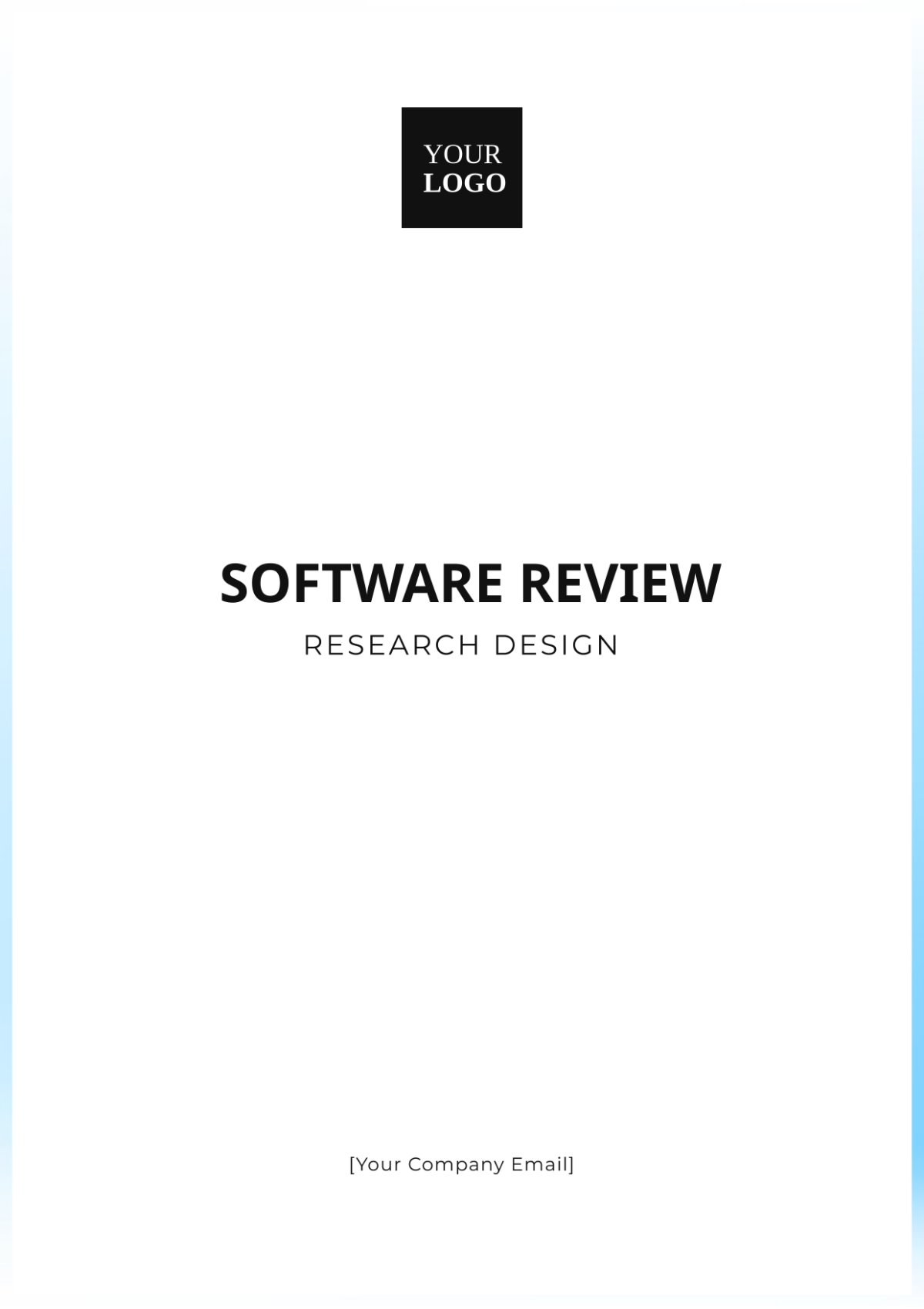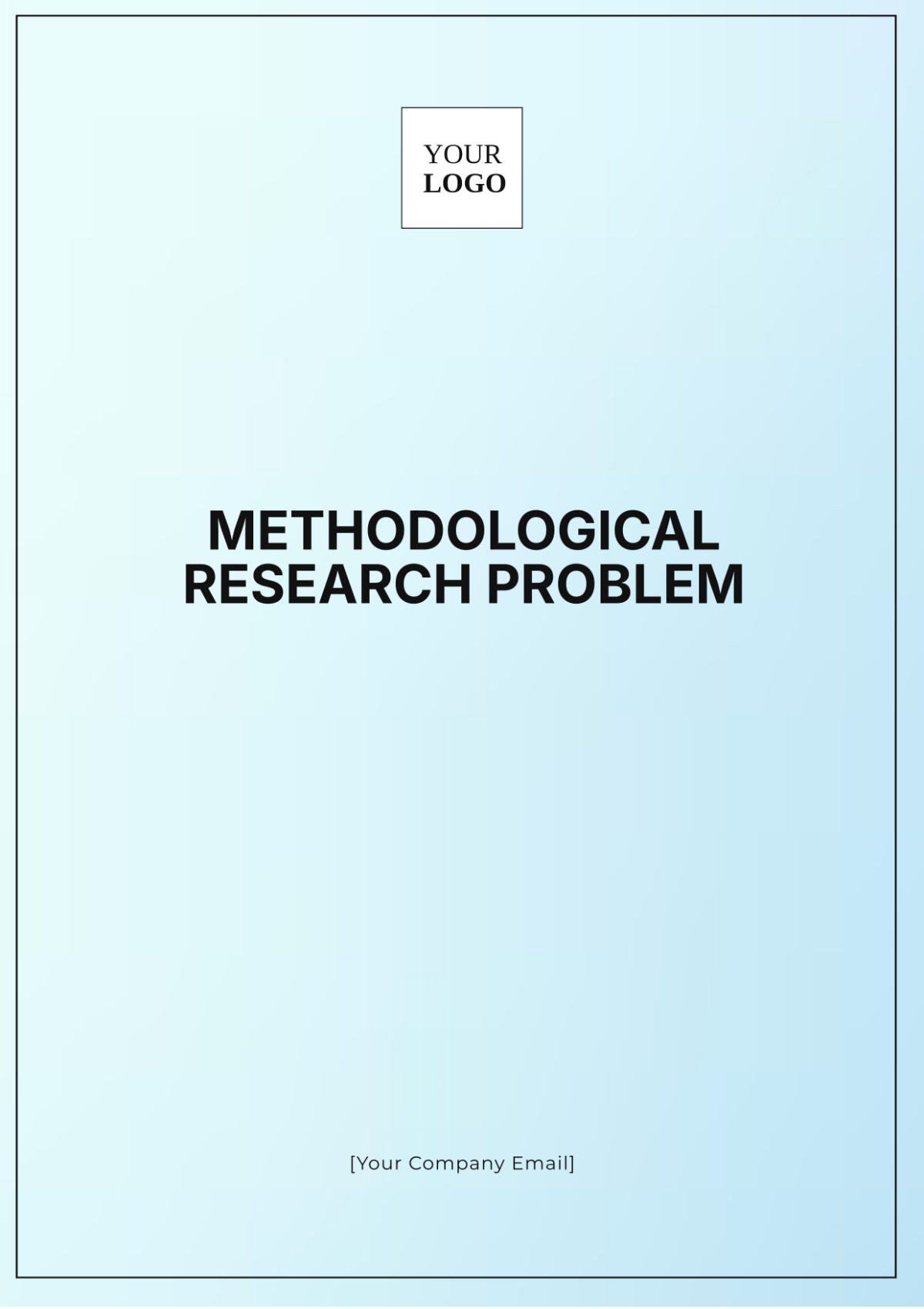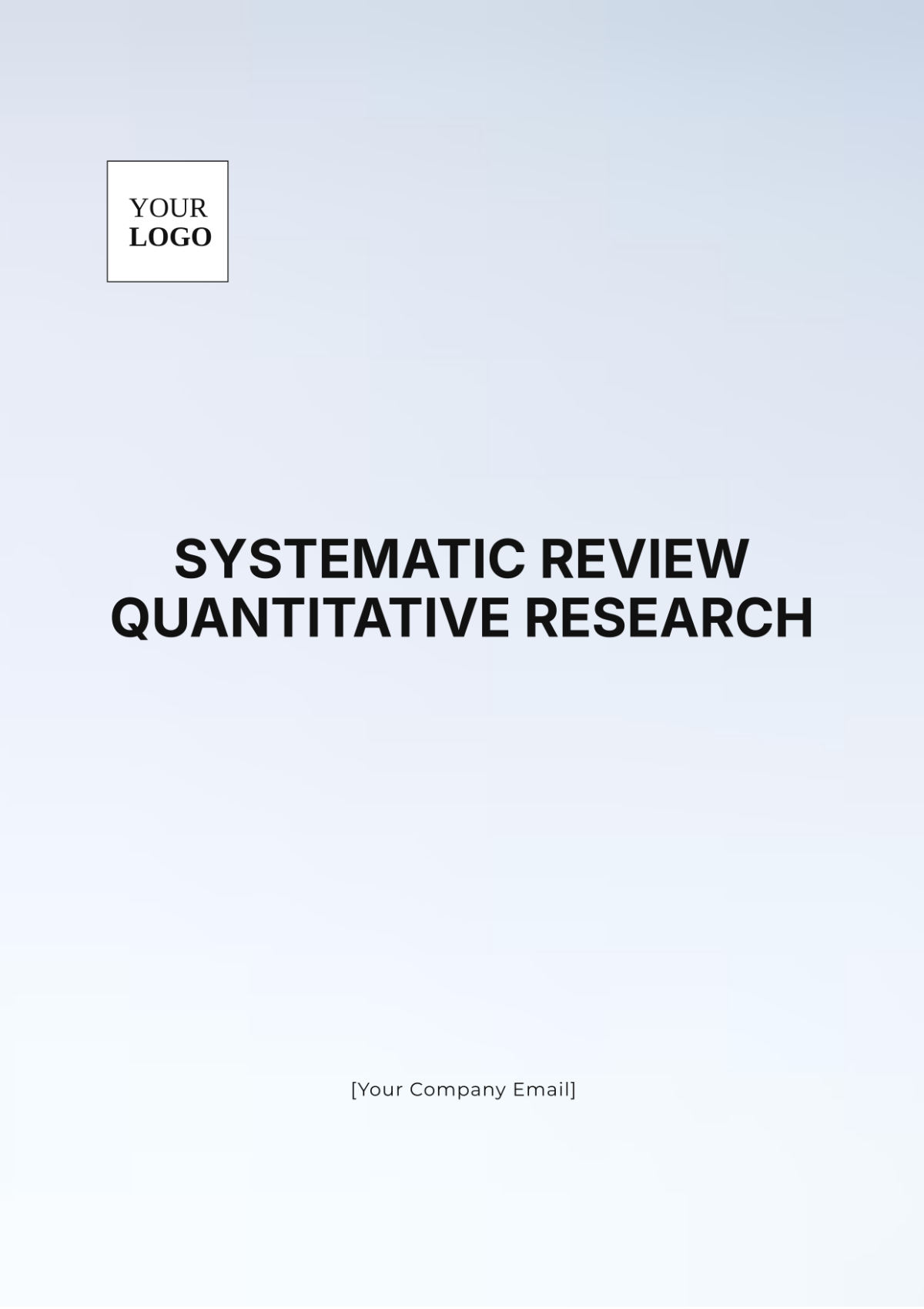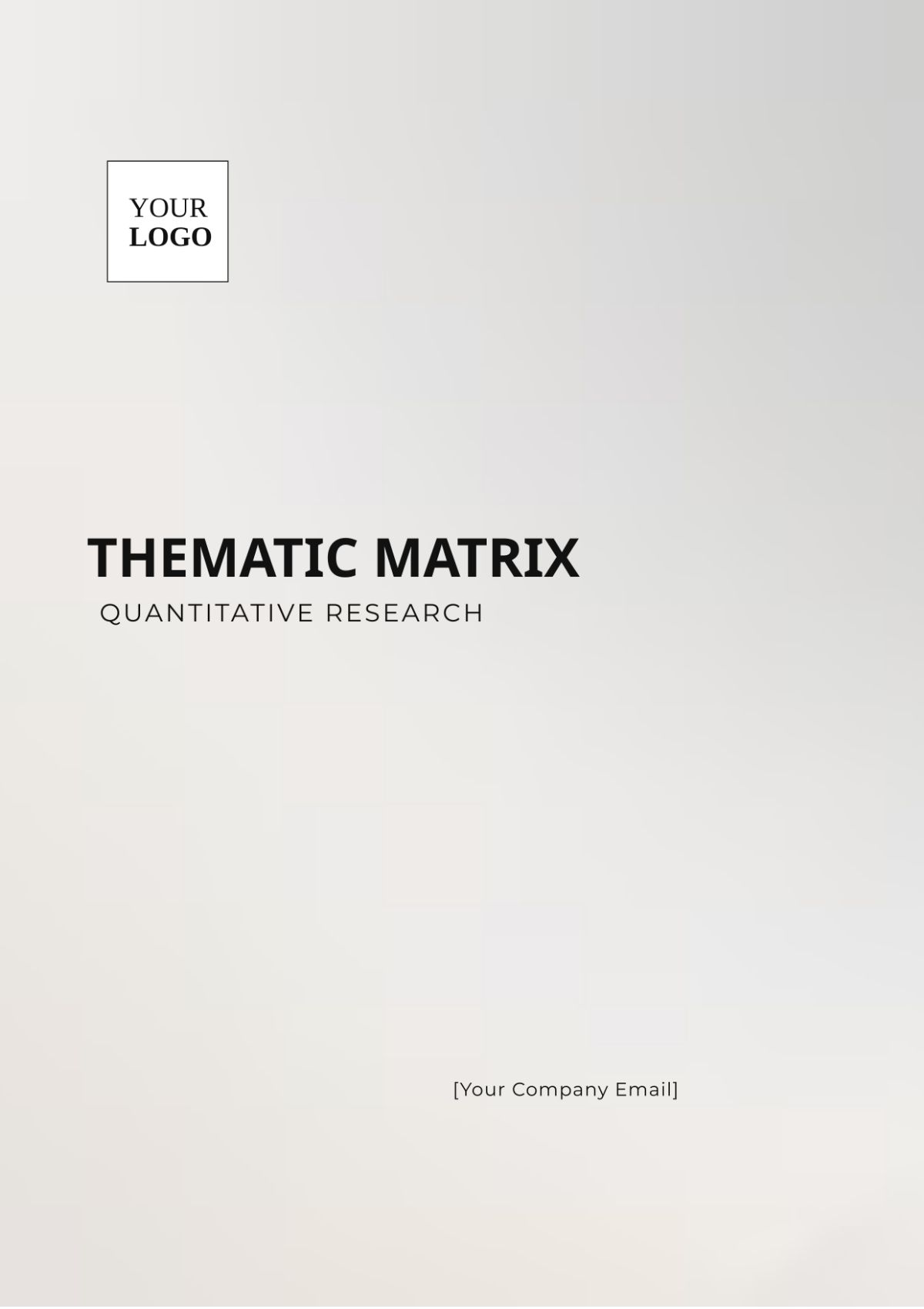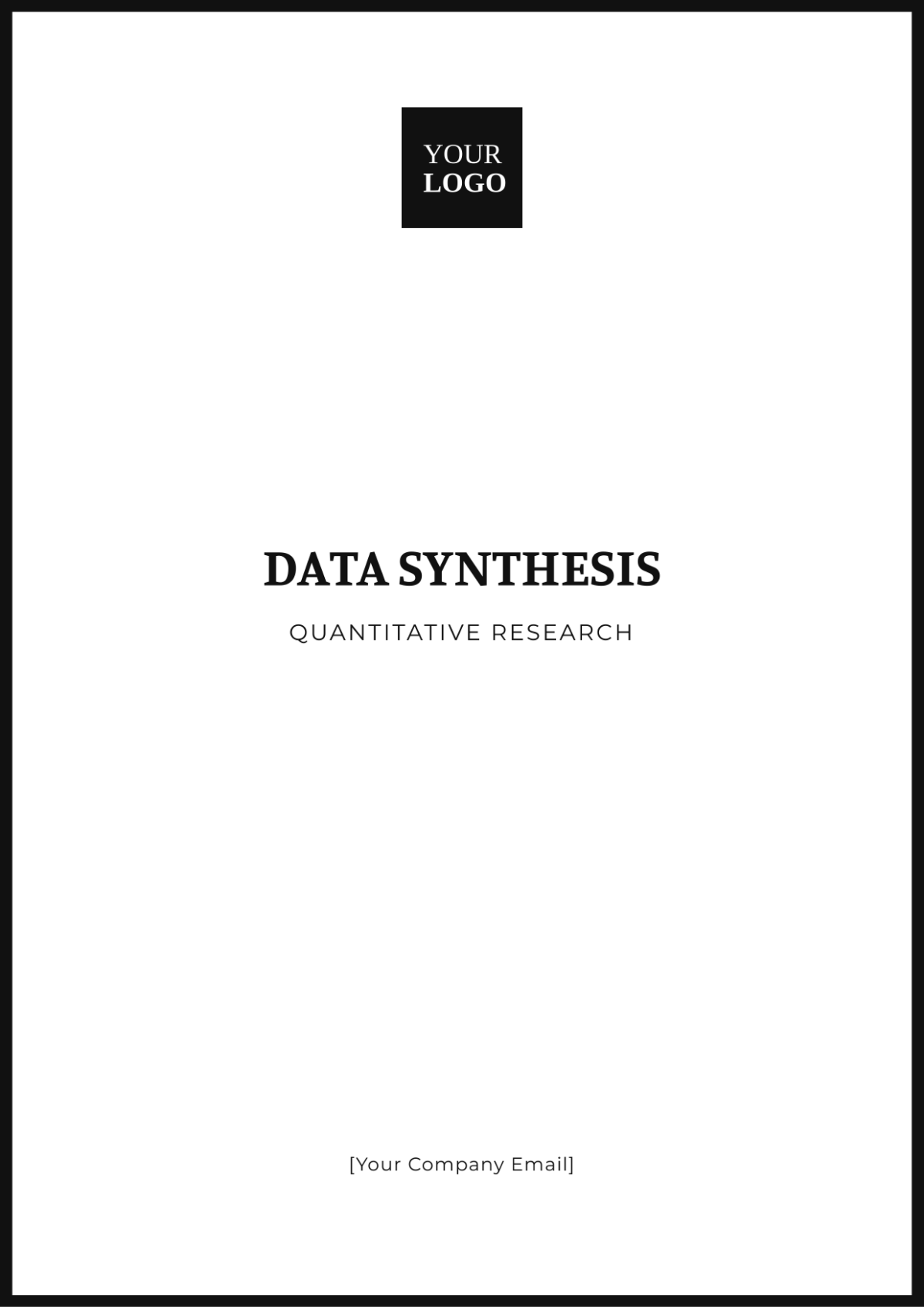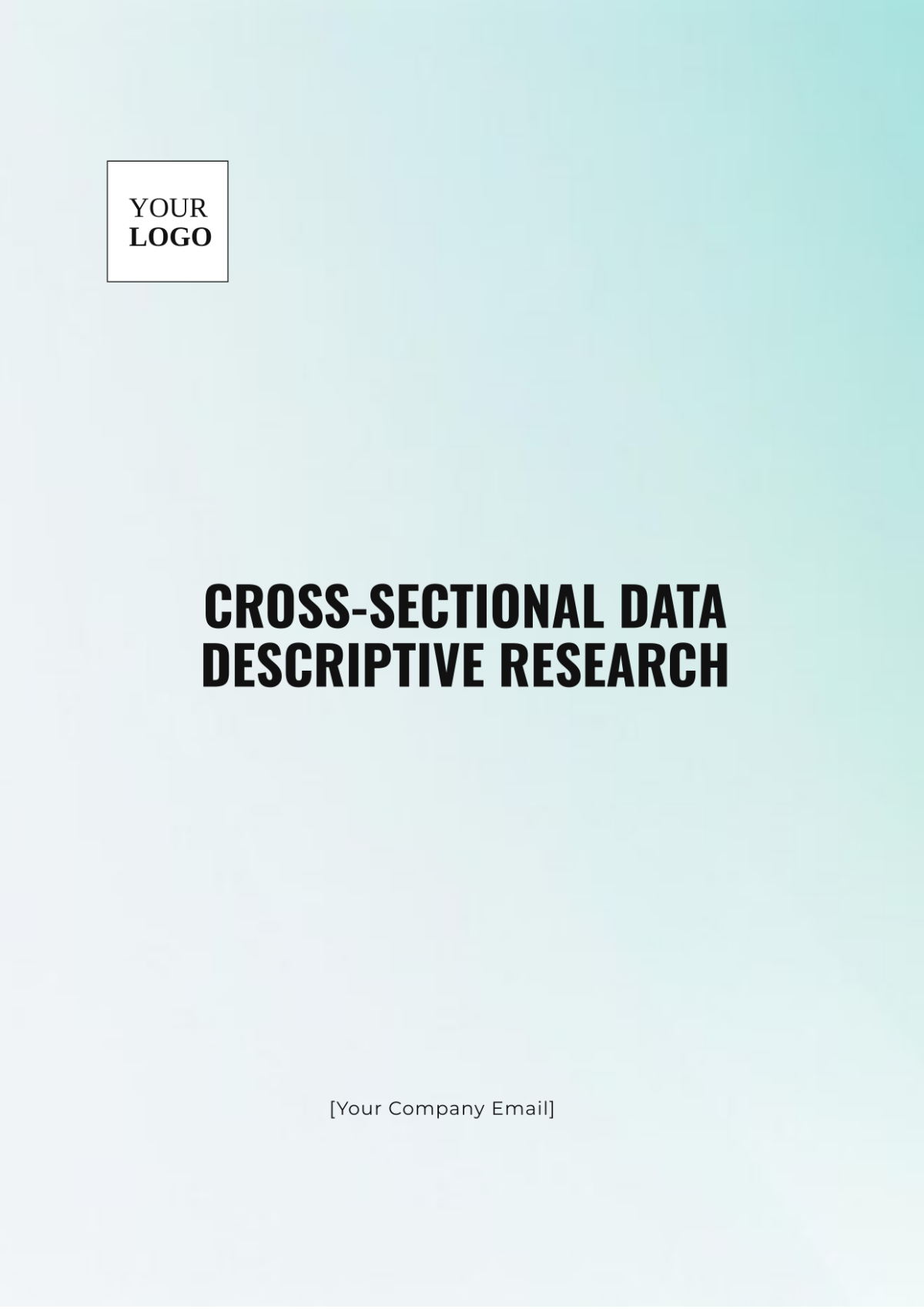Dissertation Quantitative Research
Prepared By: [YOUR NAME]
Date: [DATE]
I. Introduction
A. Background
In recent years, digital learning tools like educational apps, online platforms, and interactive software have become key in education, offering engaging ways for students to learn and possibly enhancing their academic experience. Schools are heavily investing in these tools, believing they improve learning outcomes. However, there's a lack of comprehensive research on their long-term impact on student performance, with most studies focusing on short-term effects or specific contexts.
B. Research Problem
The central problem addressed by this research is the lack of empirical evidence regarding the long-term effects of digital learning tools on student academic outcomes. While digital tools are widely used, there is insufficient data on how their use affects student grades and performance over a full academic year, especially when compared to traditional learning methods.
C. Objectives
To assess the impact of digital learning tools on student grades: Evaluate whether students using digital tools achieve higher grades compared to those using traditional methods.
To compare the academic performance of students using digital tools versus those using traditional methods: Analyze performance differences between these two groups.
To identify any differences in performance across various subjects: Examine if the effectiveness of digital tools varies between subjects such as mathematics, science, and language arts.
D. Hypotheses
H1: Students using digital learning tools will perform significantly better academically than those using traditional methods, due to the interactive and personalized nature of digital tools.
H2: Digital learning tools may be more effective in some subjects than others due to varying content delivery and engagement.
H3: The hypothesis suggests that students who use digital learning tools more frequently are likely to achieve higher academic performance.
E. Contribution to Knowledge
This study aims to provide long-term evidence of the effectiveness of digital learning tools by examining their impact on student grades across various subjects. The findings will help educators and policymakers make informed decisions about integrating these tools into education and will contribute to the academic discussion on technology-enhanced learning.
II. Literature Review
A. Theoretical Framework
Constructivist Learning Theory: Suggests learning is an active process where digital tools enhance engagement by catering to individual learning needs.
Technology Acceptance Model (TAM): Explains that perceived ease of use and usefulness influence technology adoption, helping to understand why students might prefer digital tools.
B. Previous Research
Smith et al. (2050): Found short-term increases in student engagement with digital tools but had small sample sizes and brief study durations.
Jones and Lee (2051): Reported mixed long-term effects on grades, with variability in tool use and inconsistent measurement of outcomes being key limitations.
C. Knowledge Gap
The body of research predominantly concentrates on the short-term effects associated with the use of digital tools. However, it falls short in providing extensive, in-depth studies that evaluate the long-term impact these digital tools may have across a variety of different subjects.
D. Research Justification
This research delivers an extensive, long-term examination aimed at bridging the existing knowledge gap by investigating the effects of digital tools on student performance. This analysis spans an entire academic year and encompasses a wide array of subjects to provide a comprehensive understanding of these impacts.
III. Methodology
A. Research Design
Longitudinal Design: Track academic performance over an entire academic year to observe the long-term effects of digital learning tools. This design allows for the examination of changes and trends in performance over time.
Comparative Approach: Evaluate and compare the impact of digital learning tools against traditional learning methods to determine their relative effectiveness.
B. Data Collection
Surveys: Distribute surveys to students to assess their usage and engagement with digital learning tools. Include questions on frequency of use, types of tools used, and perceived effectiveness.
Academic Records: Obtain students' grades from their academic records to measure their performance over the academic year. Ensure data is collected consistently across different subjects.
Interviews with Educators: Conduct interviews with teachers to gain qualitative insights into how digital tools are implemented and perceived in the classroom. This will provide context to the quantitative data.
C. Sample
Selection: Choose a sample of 200 students from various schools, including both those using digital learning tools and those relying on traditional methods.
Stratified Random Sampling: Use stratified random sampling to ensure the sample represents different demographics and academic backgrounds, enhancing the generalizability of the findings.
E. Variables
Independent Variable: Use of digital learning tools (presence or absence of digital tools in the learning environment).
Dependent Variable: Academic performance is assessed through the grades students earn in different subjects, indicating their comprehension and skill levels in various disciplines.
Control Variables: Subject (e.g., mathematics, science), prior academic performance (baseline grades), and engagement levels with digital tools.
F. Statistical Methods
Descriptive Statistics: Summarize data to describe the central tendencies and distributions of grades and engagement levels.
T-tests: Compare academic performance between students using digital tools and those using traditional methods to determine if there are significant differences.
ANOVA: Analyze performance differences across various subjects to assess whether the impact of digital tools varies by subject area.
Regression Analysis: Examine the relationship between engagement levels with digital tools and academic performance to identify any significant correlations.
G. Ethical Considerations
Informed Consent: Obtain informed consent from all participants (students and educators) before data collection, ensuring they understand the study's purpose and their rights.
Confidentiality: To protect confidentiality, anonymize data by removing personal details, using codes or pseudonyms, and storing it securely with encryption and access controls.
Biases: Ensure objectivity in measurement and consider all influencing factors to address potential biases in data collection and analysis.
IV. Results
A. Data Presentation
Method | Average Grade | Standard Deviation |
|---|---|---|
Digital Tools | 85.3 | 5.2 |
Traditional Methods | 78.9 | 6.1 |
Table 1: Average Grades of Students Using Digital Tools vs. Traditional Methods
Subject | Digital Tools Average Grade | Traditional Methods Average Grade |
|---|---|---|
Mathematics | 88.0 | 80.5 |
Science | 84.2 | 77.4 |
Language Arts | 82.7 | 79.2 |
Table 2: Performance Across Different Subjects
B. Statistical Analysis
Mean Grades and Standard Deviations: Provide the average grades and standard deviations for both groups (digital tools and traditional methods) to highlight overall performance levels.
T-tests: Report the t-test results comparing the mean grades of students using digital tools to those using traditional methods.
Example: t(198) = 3.45, p < 0.01, indicating significant differences in performance between the two groups.
ANOVA: Provide a comprehensive presentation of the Analysis of Variance (ANOVA) results that demonstrate the differences in performance levels across various subjects.
Example: F(2, 397) = 4.56, p < 0.05, suggesting significant differences in academic performance across subjects.
C. Key Findings
Overall Impact: Digital learning tools led to higher average grades compared to traditional methods, with students using digital tools performing better overall.
Subject Variations: The influence of digital tools differed across subjects, showing the greatest enhancement in mathematics (average grade 88.0 compared to 80.5) and a lesser effect in language arts.
Patterns: Higher engagement with digital tools correlates with better grades, particularly in subjects where these tools are used more effectively.
V. Discussion
A. Interpretation
H1 (Higher Academic Performance): Students using digital tools had higher average grades (85.3) compared to traditional methods (78.9), supporting H1 and indicating that digital tools enhance performance.
H2 (Variation Across Subjects): ANOVA results showed digital tools were more effective in subjects like mathematics but less so in language arts, supporting H2.
H3 (Engagement Correlation): Higher engagement with digital tools correlated with better grades, supporting H3.
B. Implications
Educational Practice: Digital tools can improve performance, especially in subjects like mathematics. Educators should integrate these tools into curricula to enhance learning.
Curriculum Development: Focus on subjects where digital tools show the most impact to boost engagement and performance.
C. Limitations
Self-Reported Data Bias: Administering surveys can introduce bias into the engagement data, potentially distorting the results and rendering them less representative of the actual audience interaction and participation.
Variation in Tool Usage: Variations in the manner in which tools are utilized have the potential to influence and alter the outcomes.
D. Recommendations
Implementation: Provide consistent training for educators and support for students to use digital tools effectively.
Further Research: Use larger samples and longer study periods to confirm long-term effects and explore tool features.
Practical Recommendations: Tailor digital tool use to subjects where they are most effective and support their adoption through resources and training.
VI. Conclusion
A. Summary
Main Findings: The study found that digital learning tools boosted academic performance, with students scoring higher averages (85.3) than those using traditional methods (78.9). The tools were particularly effective in math, less so in language arts, and higher engagement led to better outcomes.
B. Contributions
New Evidence: This study provides new data on the impact of digital learning tools on academic performance, highlighting their benefits in certain subjects and identifying their limitations, offering valuable insights for educators and policymakers.
C. Future Research
Long-Term Impacts: Conduct studies that extend beyond one academic year to assess the sustained effects of digital tools on student performance.
Educational Contexts: Explore how digital tools perform in different educational settings or demographic groups to generalize findings across various contexts.
Other Variables: Investigate additional factors such as teacher training, tool features, and student motivation to further understand the conditions that maximize the effectiveness of digital learning tools.
VII. References
Jones, M., & Lee, S. (2051). The long-term effects of digital learning tools on academic performance. Journal of Educational Technology, 45(3), 215-230.
Smith, R., Adams, C., & Roberts, T. (2050). Short-term engagement and digital learning tools. Educational Research Quarterly, 38(2), 142-159.
VIII. Appendices
A. Surveys and Questionnaires
Student Engagement Survey: A copy of the survey used to measure students' engagement with digital learning tools, including questions about frequency of use, perceived effectiveness, and satisfaction.
Educator Feedback Questionnaire: A copy of the questionnaire used to gather qualitative insights from educators regarding the use and impact of digital learning tools in their classrooms.
B. Raw Data Tables
Student Grades Data: Detailed tables showing the raw academic performance data for students using digital tools and those using traditional methods. This includes individual grades for each subject and overall averages.
Engagement Scores: Tables detailing the engagement scores reported by students, including how frequently they interacted with digital tools and their perceived effectiveness.
C. Additional Statistical Analyses
Descriptive Statistics Summary: A detailed overview of descriptive statistics for both groups, encompassing means, standard deviations, and frequency distributions.
T-Test Results: Detailed results from the t-tests comparing academic performance between students using digital tools and those using traditional methods.
ANOVA Tables: ANOVA results showing performance variations across different subjects, including F-values and p-values.
Regression Analysis Outputs: Detailed outputs from regression analyses exploring the relationship between engagement levels and academic performance.










